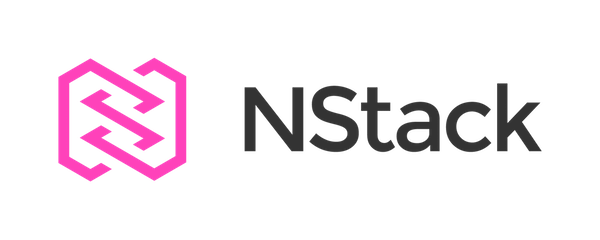NStackSDK is the companion software development kit to the NStack backend.
See the NStack documentation for more information about NStack
- iOS 8.0+ / tvOS 9.0+ / macOS 10.10+ / watchOS 2.0+
- Swift 3.0+
# Swift 5
github "nodes-ios/NStackSDK" ~> 3.0
# Swift 4.2-5 using Alamofire 5 - Pre-release
github "nodes-ios/NStackSDK" "feature/alamofire5"
# Swift 3-4
github "nodes-ios/NStackSDK" ~> 2.0
# Swift 2.3
github "nodes-ios/NStackSDK" == 0.3.12
# Swift 2.2
github "nodes-ios/NStackSDK" == 0.3.10
- Put this line in the cartfile
github "nodes-ios/NStackSDK" ~> 3.0
- Remove all other references to Alamofire and Serpent from the Cartfile
- run
carthage update NStackSDKfor your platform
- Put this line in the Cartfile
github "nodes-ios/NStackSDK" "feature/alamofire5"
- Remove all other references to Alamofire and Serpent from the Cartfile
- Make sure you don't have other dependencies using Alamofire 4 or Serpent ~> 1.0. If you have, refer to the github repo for the dependency for migration pointers
- run
carthage update NStackSDKfor your platform
NOTE: Don't forget to
import NStackSDKin the top of the file.
In your AppDelegate's didFinishLaunching: function start NStack by running:
let configuration = Configuration(plistName: "NStack", translationsClass: Translations.self)
NStack.start(configuration: configuration, launchOptions: launchOptions)You should have a file called NStack.plist in your application bundle. It needs to contain a key called REST_API_KEY and a key called APPLICATION_ID.
TODO: Docs
For an overview of what features are available and what they do check out the feature overview in the documentation.
To use nstack for translations, you need to install the nstack translations generator. After that, all translations will be available through the tr-variable. Example: tr.login.forgotPassword where login is the section and forgotPassword is the key from nstack. For example:
@IBOutlet weak var forgotPasswordButton: UIButton! {
didSet {
forgotPasswordButton.setTitle(tr.login.forgotPassword, for: .normal)
}
}Responses allow you to define and update JSON files on the NStack web console and retrieve them using the NStack sdk or using a normal get request.
NStack.sharedInstance.getContentResponse(id) { (data, error) in
guard error == nil else {
print("Error fetching response with id: \(id)")
return
}
// Use data
}Collections is a more structured version of Responses and can be used as an alternative to an simple read API. See the feature overview for a more detailed explaination.
let completion: (NStack.Result<Product>) -> Void = { result in
switch result {
case .success(let data):
print("Fetching collection successful")
print(data)
case .failure(let error):
print("Error fetching collection: \(error)")
}
}
NStack.sharedInstance.fetchCollectionResponse(for: id, completion: completion)With files you can retrieve files defined on the NStack web console using a normal get request. The files functionality has not been implemented in the sdk.
if let url = URL(string: url) {
URLSession.shared.downloadTask(with: url) { (localURL, urlResponse, error) in
guard error == nil else {
print("Error fetching file with url: \(url)")
print(error)
return
}
if let localURL = localURL {
print("Local URL: \(localURL)")
// Use the localURL to modify, use your newly downloaded file
}
}.resume()
}Version control informs the user when a new version is available and what new changes are available. You don't have to do anything to use the version control feature, just include the NStack sdk in your project. To enable it create a new version on the NStack web console. Checkout the feature overview on how to setup version control.
NOTE: This feature is not yet supported on macOS and watchOS.
Messages shows the user a custom message when the app is launched, for example warning them about a server outage. You don't have to do anything to use the messages feature, just include the NStack sdk in your project. To show the users a message create one on the NStack web console. Checkout the feature overview on how to setup messages.
NOTE: This feature is not yet supported on macOS and watchOS.
Rate reminder shows the user Apple's build in rate reminder after the user has launched the app a certain amount of times. You don't have to do anything to use the rate reminder feature, just include the NStack sdk in your project. To enable the rate reminder configure it on the NStack web console. Checkout the feature overview on how to setup rate reminders.
NOTE: This feature is not yet supported on macOS and watchOS.
NStack supports a list of geographical features. You can get and store list of countries, continents, langunages and timezones of the world, getting timezone for (lat, lng) coordinate and getting geographical information based on the requestee's ip address. For example:
NStack.sharedInstance.timezone(lat: 12.0, lng: 55.0) { (timezone, error) in
if let timezone = timezone {
print("(12.0,55.0) is in timezone \(timezone.name)")
}
}NStack makes it possible to validate the syntax and domain of an email, just use:
NStack.sharedInstance.validateEmail("tech@nodes.dk") { (valid, error) in
if valid {
//Email syntax and domain is valid
}
}Made with ❤️ at Nodes.
NStackSDK is available under the MIT license. See the LICENSE file for more info.




